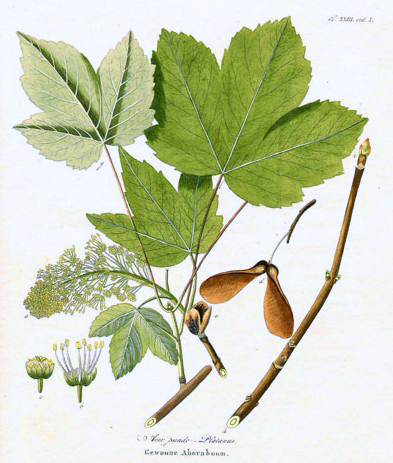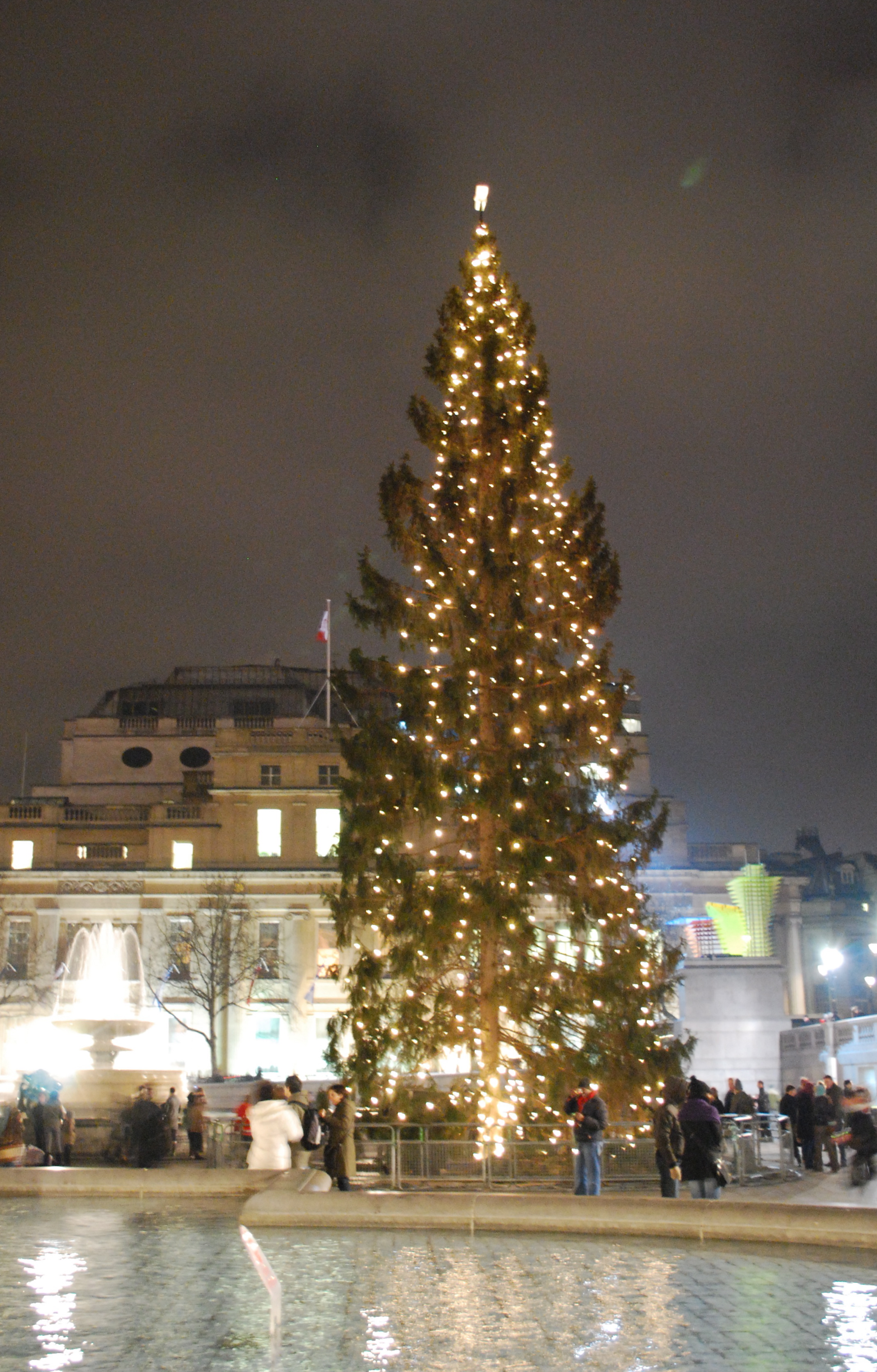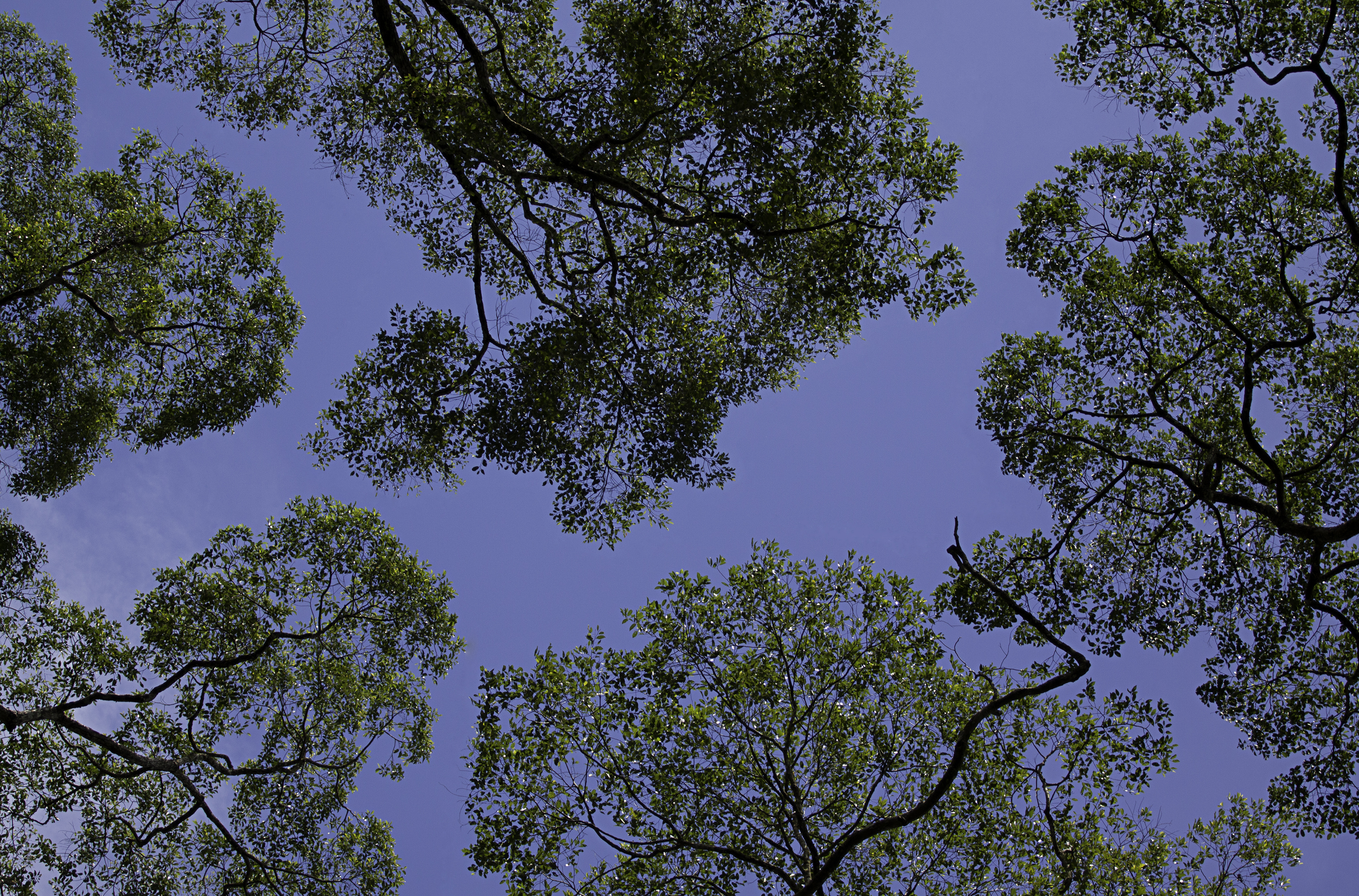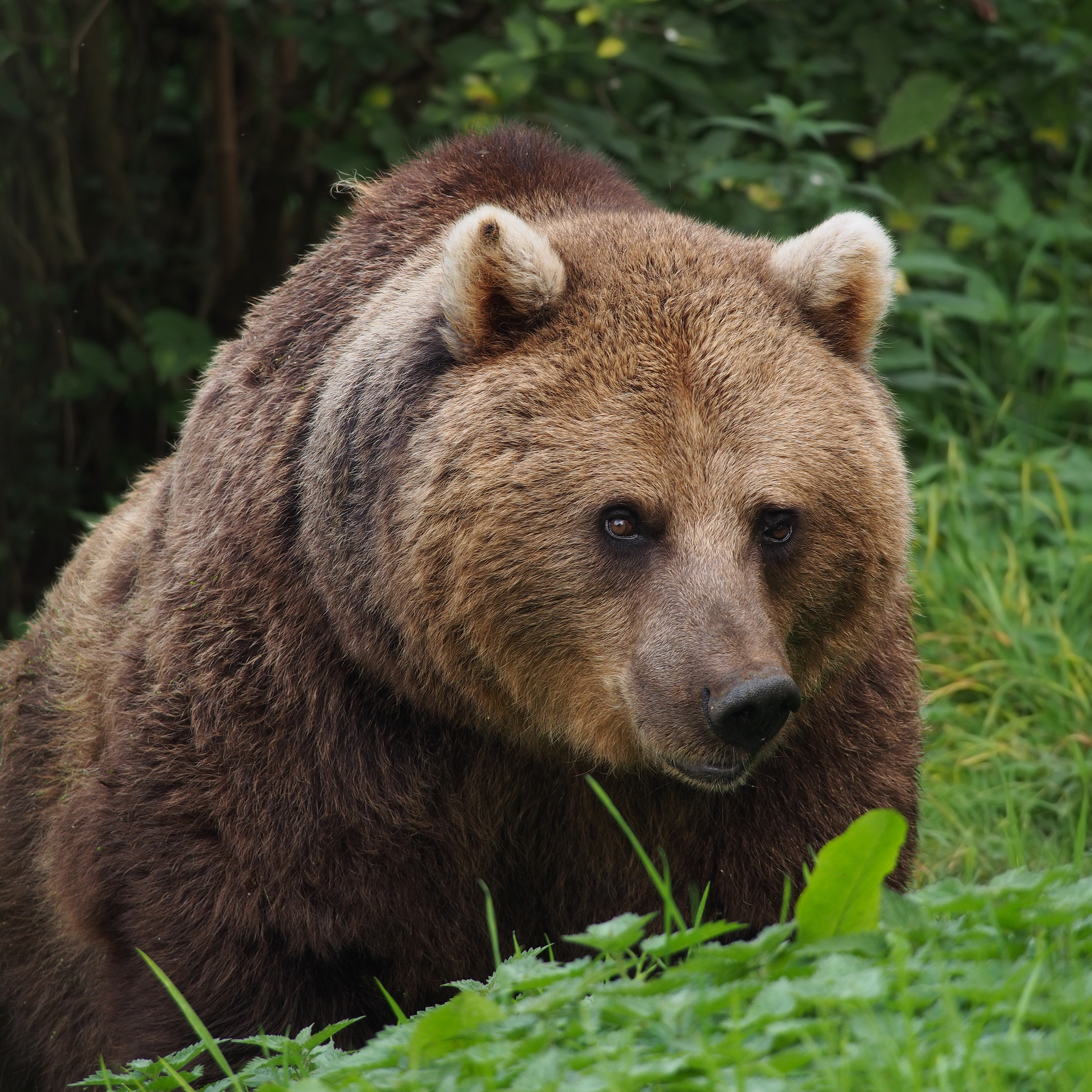|
Ravna Vala
Ravna Vala is a primeval forest located on the mountains Igman and Bjelašnica in Bosnia and Herzegovina, about 20 km south-west of Sarajevo. It was scientifically documented for the first time in 1978. Ravna Vala was first delineated as a virgin-forest reserve in 1978 and remains one of the best-studied old-growth beech–fir stands in the Dinaric Alps. Geology Ravna Vala occupies a high-mountain segment of the Dinaric Alps, where the bedrock is dominated by folded Triassic and Jurassic carbonates. These consist chiefly of thick sequences of limestone and dolomite that were deformed during the Alpine orogeny, giving rise to steep, north-easterly slopes and a well-developed karst landscape. A permanent 1 hectare research plot (and 46 temporary circular plots of 12.5 m radius) have been systematically laid out across the 45 hectare Ravna Vala reserve. Quaternary glacial and periglacial action left a veneer of moraine debris over much of the carbonate massif. On this mixed ... [...More Info...] [...Related Items...] OR: [Wikipedia] [Google] [Baidu] |
Bosnia And Herzegovina
Bosnia and Herzegovina, sometimes known as Bosnia-Herzegovina and informally as Bosnia, is a country in Southeast Europe. Situated on the Balkans, Balkan Peninsula, it borders Serbia to the east, Montenegro to the southeast, and Croatia to the north and southwest, with a coast on the Adriatic Sea in the south. Bosnia (region), Bosnia has a moderate continental climate with hot summers and cold, snowy winters. Its geography is largely mountainous, particularly in the central and eastern regions, which are dominated by the Dinaric Alps. Herzegovina, the smaller, southern region, has a Mediterranean climate and is mostly mountainous. Sarajevo is the capital and the largest city. The area has been inhabited since at least the Upper Paleolithic, with permanent human settlement traced to the Neolithic cultures of Butmir culture, Butmir, Kakanj culture, Kakanj, and Vučedol culture, Vučedol. After the arrival of the first Proto-Indo-Europeans, Indo-Europeans, the area was populated ... [...More Info...] [...Related Items...] OR: [Wikipedia] [Google] [Baidu] |
Massif
A massif () is a principal mountain mass, such as a compact portion of a mountain range, containing one or more summits (e.g. France's Massif Central). In mountaineering literature, ''massif'' is frequently used to denote the main mass of an individual mountain. As a purely scientific term in geology, however, a "massif" is separately and more specifically defined as a section of a planet's crust (geology), crust that is demarcated by geologic fault, faults or lithospheric flexure, flexures. In the plate tectonics, movement of the crust, a massif tends to retain its internal structure while being displaced as a whole. A massif is a smaller structural unit than a tectonic plate and is considered the fourth-largest driving force in geomorphology. The word "massif" originates from French (in which the word also means "massive"), where it is used to refer to a large mountain mass or compact group of connected mountains forming an independent portion of a range. The Cydonia (regi ... [...More Info...] [...Related Items...] OR: [Wikipedia] [Google] [Baidu] |
Anemone Nemorosa
''Anemonoides nemorosa'' (syn. ''Anemone nemorosa''), the wood anemone, is an early-spring flowering plant in the buttercup family Ranunculaceae, native to Europe. Other common names include windflower, European thimbleweed, and smell fox, an allusion to the musky smell of the leaves. It is a perennial herbaceous plant growing tall. Description ''Anemonoides nemorosa'' is a rhizomatous herbaceous perennial plant less than in height. The compound basal leaves are palmate or ternate (divided into three lobes). They grow from underground root-like stems called rhizomes and die back down by mid summer (summer dormant). The plants start blooming in spring, March to May in the British Isles soon after the foliage emerges from the ground. The flowers are solitary, held above the foliage on short stems, with a whorl of three palmate or palmately-lobed leaflike bracts beneath. The flowers are diameter, with six or seven (and on rare occasions eight to ten) tepals (petal-like segments) ... [...More Info...] [...Related Items...] OR: [Wikipedia] [Google] [Baidu] |
Festuca Altissima
''Festuca altissima'', also known as the wood fescue, is a species of flowering plant belonging to the family Poaceae. It was first described in 1789. Its native range is Europe to Siberia Siberia ( ; , ) is an extensive geographical region comprising all of North Asia, from the Ural Mountains in the west to the Pacific Ocean in the east. It has formed a part of the sovereign territory of Russia and its predecessor states ... and Iran. References altissima {{Pooideae-stub ... [...More Info...] [...Related Items...] OR: [Wikipedia] [Google] [Baidu] |
Sorbus Aucuparia
''Sorbus aucuparia'', commonly called rowan (, also ) and mountain-ash, is a species of deciduous tree or shrub in the rose family. The tree has a slender trunk with smooth bark, a loose and roundish crown, and its leaves are pinnate in pairs of leaflets on a central vein with a terminal leaflet. It blossoms from May to June in dense corymbs of small yellowish white flowers and develops small red pomes as fruit that ripen from August to October and are eaten by many bird species. It is a highly variable species, and botanists have used different Circumscription (taxonomy), definitions of the species to include or exclude trees native to certain areas. A recent definition includes trees native to most of Europe and parts of Asia, as well as northern Africa. The range extends from Madeira, the British Isles and Iceland to Russia and northern China. Unlike many plants with similar distributions, it is not native to Japan. The plant is frost hardy and colonizes disrupted and inacces ... [...More Info...] [...Related Items...] OR: [Wikipedia] [Google] [Baidu] |
Acer Pseudoplatanus
''Acer pseudoplatanus'', known as the sycamore in the British Isles and as the sycamore maple in the United States, is a species of maple native to Central Europe and Western Asia. It is a large deciduous, broad-leaved tree, tolerant of wind and coastal exposure. Although native to an area ranging from France eastward to Ukraine, northern Turkey and the Caucasus, and southward to the mountains of Italy and northern Iberia, the sycamore establishes itself easily from seed and was introduced to the British Isles by 1500. It is now Naturalisation (biology), naturalised there and in other parts of Europe, North America, Australia and New Zealand, where it may become an invasive species. The sycamore can grow to a height of about and the branches form a broad, rounded Crown (botany), crown. The Bark (botany), bark is grey, smooth when young and later flaking in irregular patches. The leaves grow on long Petiole (botany), leafstalks and are large and List of botanical terms#palmate, ... [...More Info...] [...Related Items...] OR: [Wikipedia] [Google] [Baidu] |
Picea Abies
''Picea abies'', the Norway spruce or European spruce, is a species of spruce native to Northern Europe, Northern, Central Europe, Central and Eastern Europe. It has branchlets that typically hang downwards, and the largest cones of any spruce, 9–17 cm long. It is very closely related to the Siberian spruce (''Picea obovata''), which replaces it east of the Ural Mountains, and with which it hybridizes freely. The Norway spruce has a wide distribution for it being planted for its wood, and is the species used as the main Christmas tree in several countries around the world. It was the first gymnosperm to have its genome sequenced. The Latin binomial nomenclature, specific epithet ''abies'' means "like ''Abies'', Fir tree". Description Norway spruce is a large, fast-growing evergreen coniferous tree growing tall and with a trunk diameter of 1 to 1.5 m. It can grow fast when young, up to 1 m per year for the first 25 years under good conditions, but becomes slower once over ... [...More Info...] [...Related Items...] OR: [Wikipedia] [Google] [Baidu] |
Abies Alba
Firs are evergreen coniferous trees belonging to the genus ''Abies'' () in the family Pinaceae. There are approximately 48–65 extant species, found on mountains throughout much of North and Central America, Eurasia, and North Africa. The genus is most closely related to '' Keteleeria'', a small genus confined to eastern Asia. The genus name is derived from the Latin "to rise" in reference to the height of its species. The common English name originates with the Old Norse ''fyri'' or the Old Danish ''fyr''. They are large trees, reaching heights of tall with trunk diameters of when mature. Firs can be distinguished from other members of the pine family by the way in which their needle-like leaves are attached singly to the branches with a base resembling a suction cup, and by their cones, which, like those of cedars, stand upright on the branches like candles and disintegrate at maturity. Identification of the different species is based on the size and arrangeme ... [...More Info...] [...Related Items...] OR: [Wikipedia] [Google] [Baidu] |
Fagus Sylvatica
''Fagus sylvatica'', the European beech or common beech, is a large, graceful deciduous tree in the Fagaceae, beech family with smooth silvery-gray bark, large leaf area, and a short trunk with low branches. Description ''Fagus sylvatica'' is a large tree, capable of reaching heights of up to tall and trunk diameter, though more typically tall and up to trunk diameter. A 10-year-old sapling will stand about tall. Undisturbed, the European beech has a lifespan of 300 years; one tree at the Valle Cervara site was more than 500 years old—the oldest known in the northern hemisphere. In cultivated forest stands trees are normally harvested at 80–120 years of age. 30 years are needed to attain full maturity (as compared to 40 for Fagus grandifolia, American beech). Like most trees, its form depends on the location: in forest areas, ''F. sylvatica'' grows to over , with branches being high up on the trunk. In open locations, it will become much shorter (typically ) and ... [...More Info...] [...Related Items...] OR: [Wikipedia] [Google] [Baidu] |
Canopy (biology)
In biology, the canopy is the aboveground portion of a plant community, plant cropping or crop, formed by the collection of individual Crown (botany), plant crowns. In forest ecology, the canopy is the upper layer or habitat zone, formed by mature tree crowns and including other biological organisms (epiphytes, lianas, Arboreal, arboreal animals, etc.). The communities that inhabit the canopy layer are thought to be involved in maintaining forest diversity, Ecological resilience, resilience, and functioning. Shade trees normally have a dense canopy that blocks light from lower growing plants. Early observations of canopies were made from the ground using binoculars or by examining fallen material. Researchers would sometimes erroneously rely on extrapolation by using more reachable samples taken from the understory. In some cases, they would use unconventional methods such as chairs suspended on vines or hot-air dirigibles, among others. Modern technology, including adapted ... [...More Info...] [...Related Items...] OR: [Wikipedia] [Google] [Baidu] |
Association (ecology)
In phytosociology and community ecology an association is a type of community (ecology), ecological community with a predictable species composition and consistent physiognomy (structural appearance) which occurs in a particular habitat type. The term was first coined by Alexander von Humboldt and formalised by the International Botanical Congress in 1910. An association can be viewed as a real, integrated entity shaped either by species interactions or by similar habitat requirements, or it can be viewed as merely a common point along a continuum. The former view was championed by American ecologist Frederic Clements, who viewed the association as a whole that was more than the sum of its parts, and by Josias Braun-Blanquet, a Swiss-born phytosociologist. On the other end of the argument was American ecologist Henry Gleason, who saw these groupings of plant species as a coincidence produced by the "fluctuation and fortuitous immigration of plants, and an equally fluctuating and va ... [...More Info...] [...Related Items...] OR: [Wikipedia] [Google] [Baidu] |
Brown Bear
The brown bear (''Ursus arctos'') is a large bear native to Eurasia and North America. Of the land carnivorans, it is rivaled in size only by its closest relative, the polar bear, which is much less variable in size and slightly bigger on average. The brown bear is a sexually dimorphic species, as adult males are larger and more compactly built than females. The fur ranges in color from cream to reddish to dark brown. It has evolved large hump muscles, unique among bears, and paws up to wide and long, to effectively dig through dirt. Its teeth are similar to those of other bears and reflect its Dietary biology of the brown bear, dietary plasticity. Throughout the brown bear's range, it inhabits mainly forest, forested habitats in elevations of up to . It is omnivorous, and consumes a variety of plant and animal species. Contrary to popular belief, the brown bear derives 90% of its diet from plants. When hunting, it will target animals as small as insects and rodents to thos ... [...More Info...] [...Related Items...] OR: [Wikipedia] [Google] [Baidu] |







